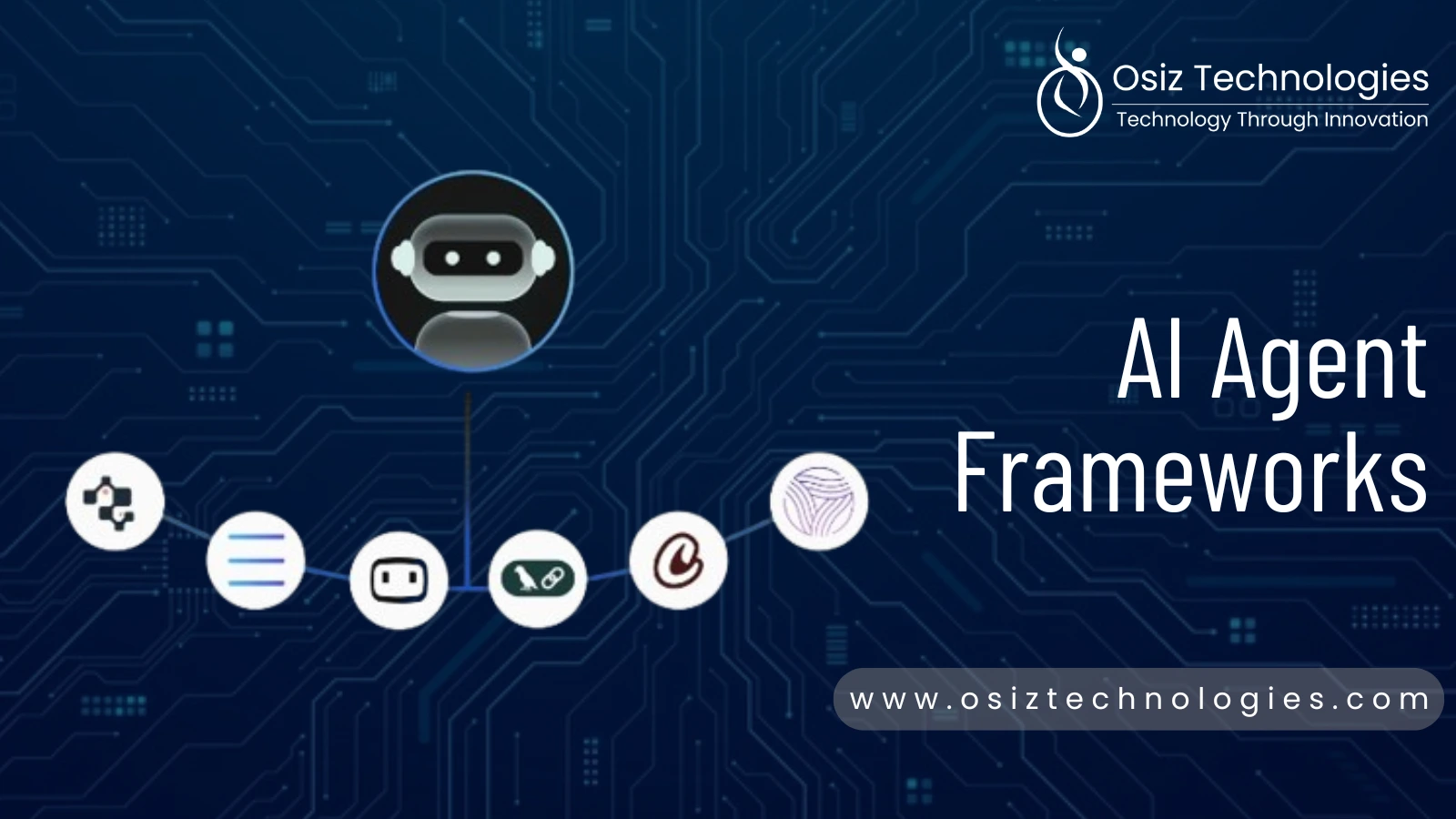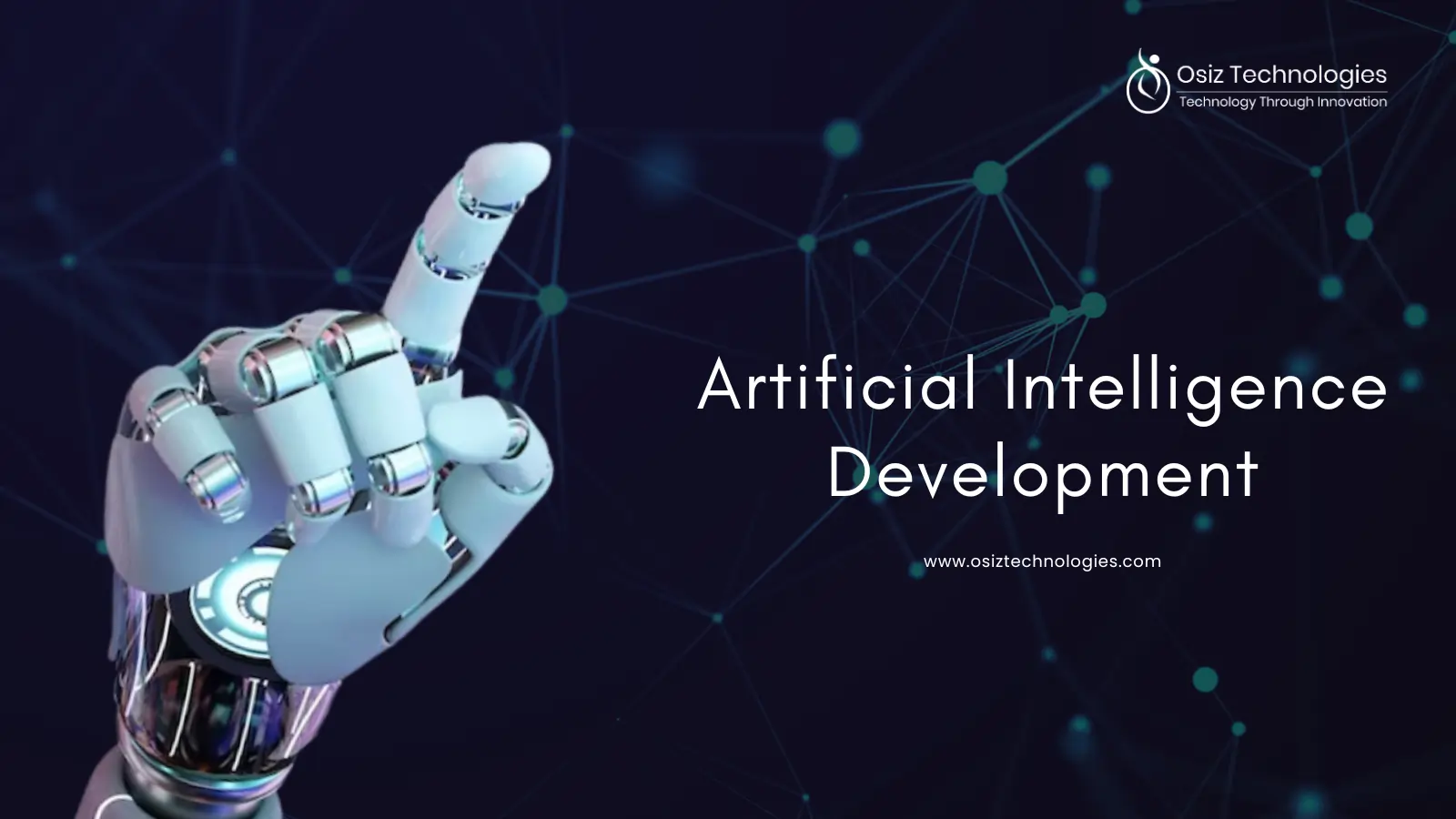The beginning of autonomous entities has just begun with artificial intelligence (AI) agents. These agents constitute the next step in automation technology, or simply put, “automation with intelligence.”
These intelligent agents operate in their surroundings, whether physical or virtual, using AI to make informed choices and achieve specific objectives or goals through continuous learning.
They use techniques such as machine learning and natural language processing to interact with the world, analyze data, and adapt to changing circumstances or situations.
AI agents can be designed to perform a wide range of tasks, from simple automation to complex problem-solving in diverse environments, including AI for Robotics.
From Code to Cognition: The Shift in AI Agent Design
AI agents are no longer just lines of code following commands; now they’re evolving into systems that think, adapt, and learn like humans. This change from rule-based programming to cognitive intelligence marks, this sets a new era in AI development.
Modern frameworks now focus on autonomy, reasoning, and emotional understanding, allowing agents to make informed decisions and continuously improve through interaction.
What once required manual data training is now achieved through self-learning algorithms that analyze context and intent in real time. As AI agents grow more easy to understand, they’re becoming essential teammates in industries from customer service to creative innovation.
Inside an AI Agent Framework
There are several types of AI agents, and each of these agents has their own unique approach and use-cases. Interestingly, most of the AI models are focused on industrial applications. We will try to understand some of the agents with a robot-vacuum (RV) or Roomba metaphor.
Goal-based agents are programmed to target particular outcomes, incorporated with search and planning algorithms to find optimal solutions - RV aims to clean the entire house. Utility-based agents, on the other hand, aim to maximize a utility function that represents their preferences and values, often employing decision-theoretic frameworks
RV prioritizes cleaning the dirtiest areas of the house first. Learning agents, as the name suggests, improve their performance over time through experience and feedback, typically employing reinforcement learning techniques - RV learns how to avoid furniture by learning the house layout over time
Source: Statista
Finding the Perfect AI Agent for Your Needs
1. Define Your Purpose
Before choosing an AI agent, clearly identify what problem it will solve. From automating processes to improving customer interactions. A well-defined goal guarantees you choose a framework aligned with your business goals and user expectations, helping achieve measurable results.
2. Evaluate Scalability
Your AI system should grow alongside your business without any trouble. Look for frameworks that can handle increased data loads, user traffic, and complex decision-making without compromising performance or reliability.
3. Prioritize Customization
Every organization has unique needs for them. Choose an AI agent that allows flexibility in design, algorithms, and integrations to deliver customized outcomes that align with your operational and strategic goals.
4. Ensure Smooth Integration
An AI agent should run smoothly into your existing digital ecosystem. Support for APIs, databases, and third-party tools guarantees efficiency deployment, faster automation, and improved ability to work together smoothly.
5. Assess Learning Capabilities
A strong AI agent must continuously improve through data and interactions. Prioritize the frameworks with adaptive learning that evolve intelligently and stay relevant as your system grows.
Top AI Agent Frameworks Shaping the Future
1) LangChain
LangChain is a "Connecting Intelligence with Context" framework which allows AI systems to link large language models with external data sources, tools, and APIs, that allowing them to reason, retrieve, and respond with deeper contextual understanding.
Bridges AI Models and External Tools: LangChain connects AI models with APIs, databases, and data sources to build context-aware systems capable of dynamic reasoning.
Highly Modular Architecture: Its flexible structure allows smooth integration with multiple large language models (LLMs) and APIs.
Use Cases: Allow developers to create chatbots, retrieval-based assistants, and workflow automation agents that respond intelligently to real-world inputs.
Enterprise-Ready Framework: Designed for scalability, LangChain supports advanced, enterprise-grade AI solutions that demand reliability and adaptability.
In Action:
LangChain is widely used in financial analytics tools, knowledge management systems, and real-time data assistants that transform complex business processes into automated insights.
2) AutoGPT
AutoGPT is "The Autonomous Task Executor" that allows AI agents to operate independently by breaking down goals into smaller tasks, executing them sequentially without constant human input.
Autonomous Goal Execution: AutoGPT brings autonomy to AI by allowing agents to define goals, plan steps, and execute tasks without human control.
Continuous Improvement: Its self-executing logic allows the system to reason and refine results with every cycle.
Use Cases: Commonly used for market research, automated content generation, and software testing, and offering end-to-end execution with minimal supervision.
Innovation in Automation: This framework sets a new benchmark for hands-free AI operations, encouraging developers to explore new automation possibilities.
In Action :
AutoGPT is used by startups and researchers to automate complex workflows like investment portfolio tracking, automated report generation, and predicting market trends.
3) BabyAGI
BabyAGI is a “Learning Through Continuous Adaptation” framework that focuses on repeated task management and goal optimization. It continuously learns from previous outputs to improve decision-making and task prioritization.
Adaptive Intelligence: BabyAGI focuses on continuously generating, prioritizing, and refining tasks based on past outcomes to improve performance over time.
Experimental Framework: It pushes AI to run through feedback loops, allowing agents to learn and adapt dynamically.
Use Cases: Developers use BabyAGI in innovation labs, creative ideation tools, and intelligent problem-solving assistants.
Iterative Task Management: Its self-improving task cycle makes it ideal for testing autonomous, evolving AI models.
In Action:
This framework is popular in research-driven environments, helping AI tools learn from their outputs and perfect for innovation teams, data science experiments, and continuous improvement systems.
4) CrewAI
CrewAI is “The Power of Collaborative Agents” framework that highlight teamwork among AI models to perform complex, multi-layered tasks efficiently. It allows multiple agents to communicate, share data, and coordinate actions toward a common goal.
Collaborative Intelligence: CrewAI allows multiple AI agents to interact and exchange insights, guaranteeing smoother task distribution and quicker finishing.
Modular Architecture: Its flexible structure allows developers to assign separate responsibilities, like planner, executor, or reviewer; to different agents.
Use Cases: Ideal for managing multi-step projects like market analysis, content pipelines, or automated research teams.
Autonomous Coordination: The framework allows agents to handle dependencies and workflows with minimal human input.
In Action:
CrewAI is widely used in enterprise automation, R&D projects, and team-based AI applications where coordination and group intelligence drive efficiency.
5) LlamaIndex
LlamaIndex is “The Intelligent Data Bridge” framework that connects large language models (LLMs) with external data sources to provide accurate, context-rich answers. It simplifies how AI systems retrieve, understand, and utilize structured and unstructured data.
Data-Driven Intelligence: LlamaIndex allows LLMs to access real-time information from databases, APIs, or documents.
Contextual Awareness: It builds structured indexes that help AI interpret and respond to complex data queries.
Use Cases: Commonly used for enterprise search systems, knowledge assistants, and personalized chatbots.
Smooth Integration: Its plug-and-play design supports integration with popular AI frameworks like LangChain and GPT-based models.
In Action:
LlamaIndex powers data-heavy AI systems across industries, from financial analytics to legal tech, making certain that AI agents perform with high accuracy and up-to-date context.
Future Blueprints: Where AI Agent Frameworks Are Headed Next
AI agent frameworks are rapidly growing beyond task automation to become autonomous systems that think, collaborate, and learn in real time. The future lies in hybrid frameworks that mix reasoning, adaptability, and human-like creativity.
Frameworks like LangChain, AutoGPT, and CrewAI are building the way for interconnected intelligence, where agents can share knowledge and self-improve. Meanwhile, Osiz AI framework is pushing this evolution further by creating custom enterprise-grade AI ecosystems that combine automation with real-world adaptability.
In the coming years, we’ll see frameworks highlighting self-healing logic, contextual reasoning, and secure multi-agent collaboration, guaranteeing AI can handle complex workflows while maintaining reliability and trust. As innovation accelerates, the energy between open-source frameworks and modified enterprise solutions like Osiz’s AI infrastructure will define the next step in intelligent automation.
Conclusion
As AI agent technology continues to grow, the line between automation and intelligence grows smaller, bringing smarter, more customizable systems to every industry. These frameworks are recreating how businesses operate and making processes faster, decisions smarter, and interactions more like human-thinking.
Osiz, as a leading AI Agent Development Company, with transformation they creating next-generation AI solutions for organization worldwide. By combining creativity, flexibility, and scalability, Osiz helps businesses open-up the full potential of intelligent automation. The future of AI agents is here, and Osiz is building it with accuracy and purpose.
Listen To The Article
Recent Blogs

X-Mas 30%
Offer










